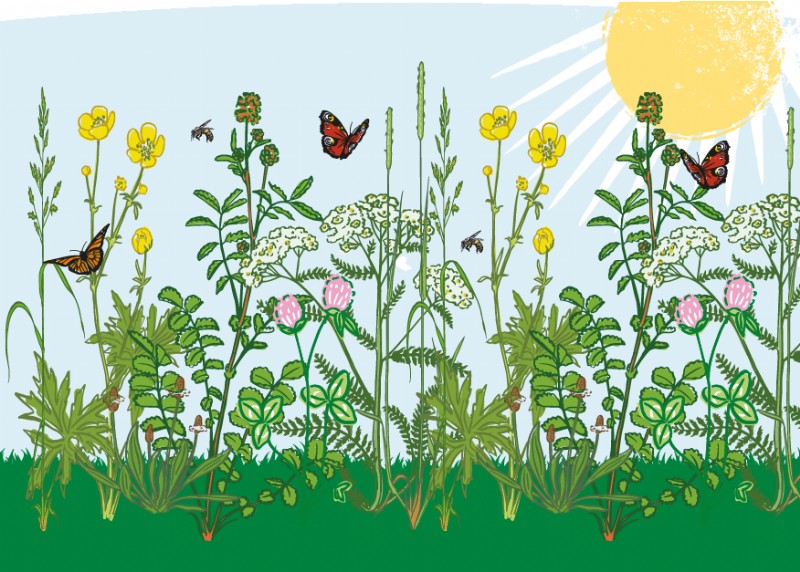

Sowing and Growing Wildflowers
Generally wild flowers are sown from March to May in the spring and late August to October in the autumn.
Sowing rate
The sowing rate is 2-2.5 grams per square metre or 8-10 kg per acre depending on the mixture. Putting on more than this will mean the stronger species (grasses) will start to dominate and you will see fewer wildflower species.
Establishing a wildflower meadow
It is important to control any weeds in the area to be sown before the seeds are broadcast. Problem weeds are docks, thistles and nettles as these cannot be removed easily once the meadow area is sown.
Stale seedbed technique - prepare the seedbed as usual then wait a few weeks for weeds to germinate, then cultivate again to destroy the weeds. Then sow your seed.
Black plastic sheeting can work well on small areas.
Once weeds have been dealt with, prepare a fine, but firm and well-worked seedbed and give it a roll. Then broadcast the seeds by hand or using a spinner. Once this is done, harrow or rake the area, then roll it again to ensure the seeds are in good contact with the soil.
Annual wild flowers should be spring sown into bare soils to get the best results, they should be sown by May for a late spring/early summer sowing.
Overseeding
If an existing meadow starts to look thin, then it is possible to overseed with just wildflower seeds, although to do this successfully the area must be cut and harrowed well, beforehand to ensure the seeds reach the soil.
Managing a wild flower meadow
If left alone, a wild flower meadow will quickly return to scrub with the more competitive species taking over. Any wildflower meadow should be mown during its first year to control annual weeds and prevent the grasses from dominating. However, the Cotswold Wild Flora mixture contains annuals, so it is best to delay the first cut until after these species have flowered. In subsequent years you would only expect to cut the meadow once annually, after the meadow has flowered and gone-over.
After mowing, remove the cuttings. This helps decrease the fertility of the soil so favouring delicate wildflowers. If you have very poor growth on thin soil, then cuttings can be left.
Preventing grasses from smothering the flowers
Wildflower mixtures contain fine, non-aggressive grasses, excluding the more competitive grasses such as ryegrasses, cocksfoot and agricultural forms of timothy. Heavy, clay-rich or fertile soils will encourage grass growth, so meadows are most successful on lighter, drier, free-draining soils.
Coping with weeds
Any perennial weeds should be cut out or spot treated. Annual weed varieties will disappear after the first season.
Persistence
Wild flower meadows, once successfully established, should be permanent, and will improve and evolve with age.
Fertile soils
Wildflowers prefer infertile soils, so do not thrive in areas of high fertility. Some enthusiasts remove fertile topsoil exposing less fertile subsoil.
Species domination
If established correctly on the right type of soil, the balance of species should be harmonious. Any imbalance normally means the soil is too heavy, too wet or too fertile, so favouring grasses.
Date Posted: 22nd March 2019




